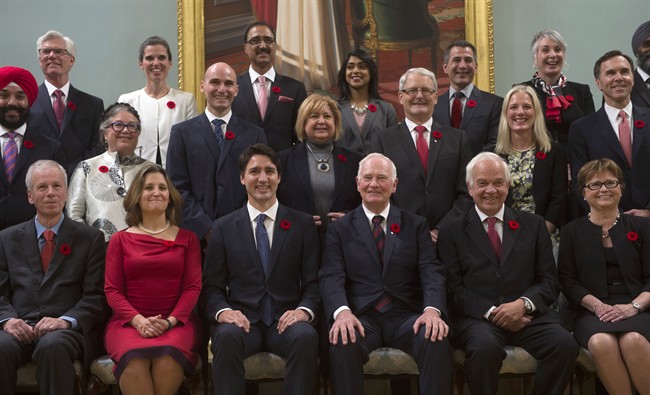Prime Minister Justin Trudeau’s pledge to achieve gender parity in his cabinet made headlines, as did his historically diverse group of ministers — diverse in ethnicity, life experience, ability, sexual orientation, religion.

That pledge hit a bit of a snag on Friday when it was revealed that five of the new female ministers were actually ministers of state and would earn less. But the Liberals quickly said they would fix the discrepancy by adjusting Treasury Board guidelines and make those salaries retroactive to Wednesday when they were sworn in.
But it speaks to the tricky optics of deliberate diversity and the gap that can exist between symbolism and substance.
This is not a new debate. People have been discussing the merits of quotas and affirmative action as ways of rectifying systemic inequities ever since societies decided those inequities were a bad thing.
It continues in part because, despite decades of hand-wringing, those systemic inequities still exist in the highest echelons of Canadian power.
Aiming for gender parity in cabinet is “a very good idea,” says McMaster University social scientist Karen Bird.
“It’s important, symbolically. … It shows Canadians that everybody has a fair opportunity to get a seat at the table.”
The hard part, she said, is making it more than symbolic.
Descriptive vs. substantive representation
Social scientists differentiate between “descriptive” and “substantive” representation when it comes to diversity, Bird said.
Descriptive is easier to measure, but more superficial: How many women/people of colour/religions/sexualities are there at the table?
Substantive is the impact of that diverse representation.
At the most basic level, when a government is making decisions that affect a certain group, it helps to have that group’s perspective present among the people making those decisions.
Nonexistent or inadequate representation of indigenous Canadians, for example, has resulted in bad decisions and policy failures, Bird says.
“If it’s all the same kinds of people at the table, you get a groupthink, kind of. … Communication improves when you have more diversity,” she said.
Quota ceilings
But hard quotas don’t always help, Bird said: Sometimes “that presents a ceiling” — once the quota’s reached, no more women or minorities are allowed in.
In a New York Times piece last week, Anna Holmes argued the word “diversity” has lost much of its meaning: It risks becoming “a box to check off,” making us feel better about deep-rooted societal problems while absolving us of actually having to do anything to fix those problems.
“It’s almost as if cheerfully and frequently uttering the word ‘diversity’ is the equivalent of doing the work of actually making it a reality,” she wrote.
Ratna Omidvar is far more optimistic.
Omidvar has built her career on promoting diversity in hiring and appointments — with the Maytree Foundation and now with Ryerson’s Global Diversity Exchange.
She’s in Europe, where Canada’s cabinet mosaic is making waves.
“The face of Canada, as they see it, is completely changed. And they’re very excited about it,” she said.
“The level of enthusiasm for what Prime Minister Trudeau is doing at this point is very, very high.”
Omidvar calls this a “sea change” in Canadian politics and identity.
“This election will affect Canadians’ perspectives of themselves. Because for the first time we see faces of the real Canada in parliament.”
But, she notes, it’s not as though Trudeau had to tie himself in knots to find qualified, diverse cabinet members: He had a wealth of experienced individuals to choose from.
And that’s as it should be, Omidvar said — a diversity of perspectives not for optics or political points but because it would be absurd not to.
“It’s a demographic reality that is finally finding a place in the institution that best reflects Canada.”




Comments